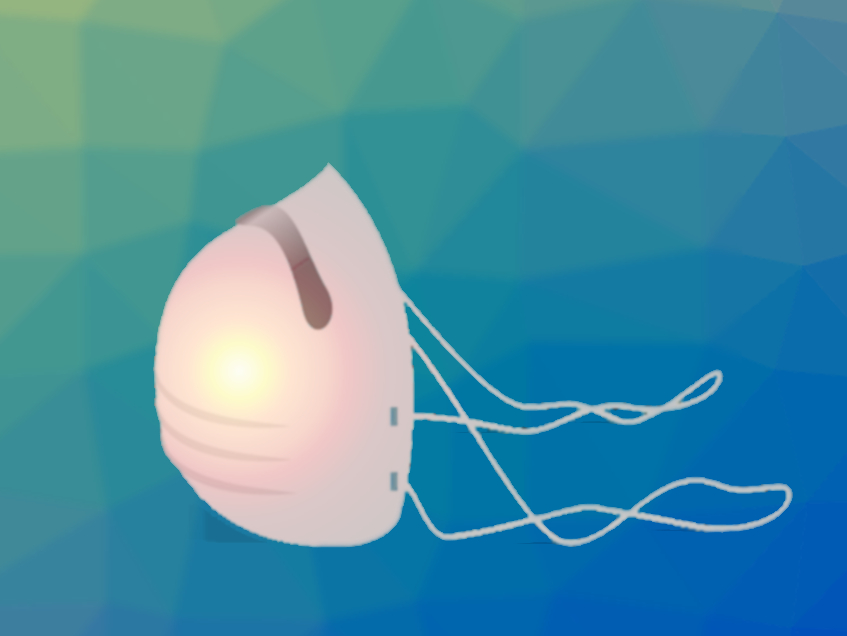The COVID-19 pandemic has led to recommendations or requirements for the use of face masks in many public places. Masks can help to reduce the spread of respiratory droplets that could contain the SARS-CoV-2 virus, which causes COVID-19. They achieve this by filtering out some of the droplets. Inactivating the virus within the mask, e.g., by heat, could further reduce the risk of infection.
Michael Strano, Massachusetts Institute of Technology (MIT), Cambridge, USA, and colleagues have developed a concept for a face mask with a heated copper mesh that could inactivate viral particles. The mask design is based on a so-called reverse-flow reactor. As the person wearing the mask breathes in and out, the airflow continually reverses. This allows any viruses in the mask to pass over the heated mesh multiple times, increasing the likelihood of virus deactivation. Purified air flows out of vents on both sides of the mask. The copper mesh in the team’s design is surrounded by neoprene, an insulating material, to allow for the necessary temperature for virus inactivation while insulating the wearer’s face and providing air that is cool enough for inhalation.
The team used modeling to find the optimal temperature range they would need to achieve to kill coronaviruses flowing inward or outward during breathing. They solved the relevant heat and mass transport equations to evaluate both viral and CO2 transport. This led them to a mask with a volume of 300 mL that operates at a temperature of 90 °C, containing a copper mesh with an approximate mesh diameter of 0.1 mm, which they consider a good candidate. The researchers plan to test prototypes next.
The team points out that conventional masks are effective and should be used during the pandemic, but heated masks have an advantage: because they kill the virus, they do not need to be decontaminated or thrown away after use. However, they would be more expensive, which might limit their applications.
- A Virucidal Face Mask Based on the Reverse-flow Reactor Concept for Thermal Inactivation of SARS-CoV-2,
Samuel Faucher, Daniel James Lundberg, Xinyao Anna Liang, Xiaojia Jin, Rosalie Phillips, Dorsa Parviz, Jacopo Buongiorno, Michael S. Strano,
ArXiv 2020.
arXiv:2010.11336The research has been published as a preprint and has not yet been peer-reviewed. It should not be used to guide clinical practice or health-related behavior.
Also of Interest
- Collection: SARS-CoV-2 Virus
What we know about the new coronavirus and COVID-19

